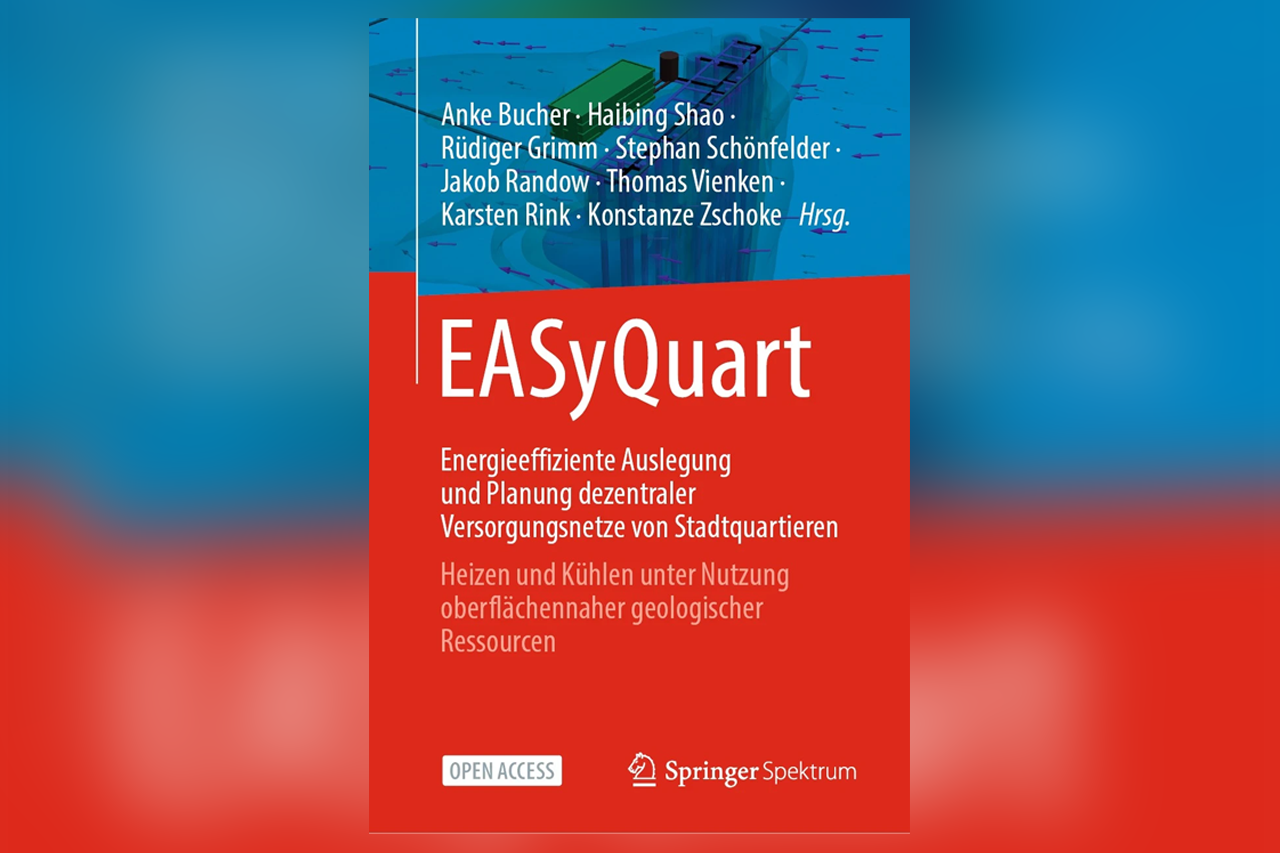The results of the EASyQuart research project have now been published as an open access publication by Springerverlag.
Interested parties can now download the open access publication of the project results of the research project "Energy-efficient design and planning of decentralised supply networks for heating and cooling urban districts using the near-surface geological space (EASyQuart)" from Springerverlag as a PDF or EPUB at the following link: link.springer.com/book/10.1007/978-3-662-67140-5.
The EASyQuart research project was carried out from September 2019 to March 2023 under the direction of Prof. Anke Bucher, Chair of Applied Mechanics (Faculty ING, HTWK Leipzig) and in cooperation with the partners geoENERGIE Konzept GmbH Freiberg and the Helmholtz Centre for Environmental Research GmbH - UFZ Leipzig. It was funded by the Federal Ministry of Economics and Climate Protection (BMWK) as part of the German government's 7th Energy Research Programme.
The subject of the EASyQuart joint project was the development of a location-based decision support system for heating and cooling urban neighbourhoods using near-surface geothermal resources. The decision support system is to be understood as a guideline for action that formulates optimised structures as to which actor should become active in the design process at which point in time and with which instruments, depending on the specific site conditions. The project results include the development and expansion of workflows, evaluation criteria and practical scientific instruments that go beyond the forecasting instruments used in current design practice and are intended to help avoid economically disadvantageous over- or undersizing. With its results, the project contributes to the flexibilisation of design procedures, regulatory framework conditions and business models in the form of recommendations for action.
Improved instruments were introduced into the decision support system in the area of innovative methods for underground exploration and monitoring and building services, numerical simulation in the underground and above-ground components of the energy systems under consideration and integrated 3D visualisation. Analyses at demonstration sites were used to parameterise simulation models and evaluate individual project results. The innovative content of the project idea consisted in the development of instruments for the site-based analysis of the supply and demand side, including their validation with site data, and offers commercial and official users support in the preparation of forecasts on the economic viability of utilisation options for near-surface geological space for heating and cooling, from individual buildings to neighbourhood solutions.
Fortunately, the research activities can now be continued from January 2024 in the follow-up project EASyQuart-Plus. This project is also funded by the BMWK and brings together two new cooperation partners in the consortium in addition to the three original players: heatbeat engineering GmbH from Nuremberg and the University of Leipzig. There are also two associated partners, Stadtwerke Leipzig and Baugrund Süd GmbH. The financial scope of the project for all partners totals around EUR 2 million. The HTWK's share of the funding will enable three full-time positions to be filled over the three-year project period.
The aim of the EASyQuart-Plus project is to demonstrate the practical usability of the concepts, workflows and instruments developed in the previous EASyQuart project under real conditions at the site scale. To this end, the digital implementation of the phases of the decision support system formulated in documents to date is planned as part of the digital twin of a geothermal probe system. In addition, in-depth methodological analyses are to be carried out in order to close existing knowledge gaps and further improve the quality and reliability of predictive planning measures. The new partners Leipzig University with the Institute for Communication and Media Studies (IfKMW) and heatbeat engineering GmbH have been won for the inclusion of new, important topics such as the improved strategic communication of geothermal energy to different target groups and the integration of geothermal energy into holistic energy system analyses. Both have proven expertise in the areas mentioned. New findings are to be expected, particularly with regard to the practical effectiveness of the methodological components developed. In this context, the focus of the project work is shifting more towards the application of the knowledge gained in dimensioning practice. In addition, the implementation of methodological findings in practice-relevant digital instruments is becoming more important.
